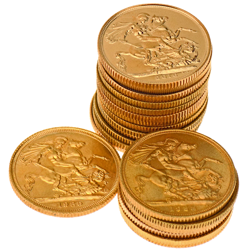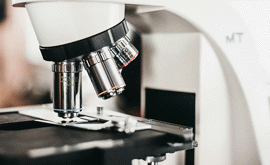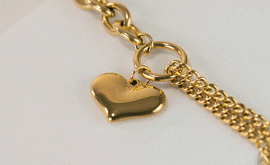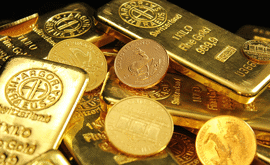What Is Gold Used For?
Civilisations all across the world have coveted and revered gold for as long as records have existed. This most precious and useful of metals features unique properties, and it is thanks to these that make it a top choice for a wide variety of industries. Gold is one of the most sought-after and widely used commodities on the planet. The fact that it does not tarnish and is so easily-shaped makes it perfect for use in all kinds of applications. Read on to find out the top uses for gold today.
What are the physical properties of gold?
Gold is a unique material, with many properties that make it highly useful. An excellent conductor of electricity and heat, this precious metal does not rust or tarnish unlike many others such as silver. Highly reflective and extremely dense, gold has a very high boiling and melting point and is extremely malleable, making it a useful material with many purposes. This precious metal is also highly sustainable, as it can be recycled and reused multiple times without losing its quality.
Uses of gold
One of the most highly desired yet useful materials in the world, gold is widely used within many industries in our culture and society. Beyond its role in jewellery and as a store of value, gold is also widely used in electronics, medicine, and aerospace. Its excellent conductivity makes it an important component in electronic devices such as smartphones and computers. The aerospace industry also relies on gold to coat materials, protecting spacecraft from the harsh conditions of outer space. Gold's versatility goes beyond simple aesthetic appeal, as the precious metal is used in a wide range of luxury and practical applications:
- Currency and investment
- Gold jewellery
- Electronics
- Dentistry
- Medicine
- Computers
- Aerospace
- Gold leaf
- Glassmaking
- Status symbols and awards
The top ten uses for gold
1. Gold is extensively used for currency and investment
Investment in precious metals has been on the rise in recent years as investors focus on physical gold as a means of financial security, with gold bullion bars and gold coins remaining a highly popular way for people to purchase, store, and invest in their future.
Rare and highly valued, gold has been in use as currency around the globe for thousands of years. The timeless rarity and usefulness of gold make it a desirable substance which always holds a store of value, even today in our technological world. Durable, valuable and easily divisible when needed - gold is often seen as a safe haven during times of economic instability, when other assets lose value.
2. Gold jewellery
A large amount of the gold used each year comes from the jewellery trade. Due to its beauty, durability, and tarnish resistance, gold has been used to make jewellery for many thousands of years. Able to be alloyed with other metals as well as the ability to be easily moulded into a variety of shapes and styles, gold is an adornment that is revered and never seems to fall out of fashion.
3. Gold can be found in many electronics
Gold is an efficient conductor and can carry small electrical charges and so a tiny amount of gold can be found in many electrical devices including mobile phones, televisions, and GPS units. A single mobile device can contain up to around 50 milligrams of gold.
4. Gold has long been used in dentistry
Gold is reported to have been used in dentistry as early as 700 B.C and was probably used to fill tooth cavities in ancient times. Used widely up until the 1970s, when rising prices saw the development of other materials to be used instead, gold was used for the likes of crowns, fillings and bridges due to its ease of working as well as it’s nonallergenic properties and, of course, it’s aesthetic appeal.
Concerns over long-term health implications over the use of other materials have recently seen the amount of gold used in dentistry start to rise again in recent years.
5. Gold is frequently used in medicine
Gold is used in medicine to treat a variety of medical conditions such as rheumatoid arthritis, certain cancers, and some eye conditions, due to its non-toxic nature. Microparticles of gold can be injected or implanted to treat many of these health conditions. Pieces of equipment used in the medical field such as life support machines, surgical instruments, and many pieces of electronic equipment also contain small amounts of gold due to its nonreactive properties and highly reliable nature.
6. Gold is required in the use of computers
Both desktop and laptop computers require a reliable conductor for a fast yet accurate transmission of digital information, and nothing meets these requirements quite like gold. The plug-and-socket connectors to attach cables, as well as the connectors used in memory chips and microprocessors all contain gold. Often alloyed with other metals such as nickel to increase durability, the importance of gold as a high quality and reliable material in these machines cannot be overstated in this digital age.
7. Gold is essential for use in aerospace
Reliable and effective materials are extremely important in the field of aerospace, and gold plays a dependable and essential role. In every single vehicle that NASA launches into space, gold is used in hundreds of ways. The precious metal is used in the circuitry, to lubricate the mechanical parts within the spacecraft, and also to coat the inside of each craft in order to protect the astronauts from infrared radiation and extreme temperatures.
8. Gold leaf
Gold is highly malleable and can be worked into sheets that measure just a few millionths of an inch thick, known as ‘gold leaf’. Gold leaf has been used throughout history to create a beautiful and eye-catching coverings on the external and internal surfaces of buildings such as religious temples and royal palaces. Gold is surprisingly durable and can help protect against corrosion, and is also used to decorate furniture and picture frames.
9. Small amounts of gold are often used in glassmaking
Climate-controlled buildings use gold in the making of the special glass to cover their buildings. A tiny amount of gold is used within the glass to reflect solar radiation and helps the buildings stay cool in the summer. This gold within the glass also helps to keep the building warm in winter by reflecting inward the heat already inside.
10. Gold is the ultimate status symbol
Gold has long been associated with high esteem and seen as a status symbol, so of course it is the metal of choice when it comes to religious objects and royal items. Important achievements are also historically honoured with an award made of gold - Academy Awards Oscar winners are given a golden statue and Olympic Games winners are awarded gold medals.
In conclusion
Clearly, gold’s importance cannot be overstated. A widely used and prized asset, gold bullion has proven over and over again to be the metal most treasured and admired all across the world. From its role in currency and investment, to its use in jewellery, medicine, and technology, gold’s versatility knows no bounds. Its unique physical properties ensure it continues to play an important role in technological advancements, enhancing our everyday lives. As a sustainable material that can be reused repeatedly without losing quality, this most precious of metals continues to shine. Gold’s many uses keep it in demand at all times, ensuring it maintains intrinsic value over the long term - often serving as a safe haven against inflation and the erosion of fiat currencies.
If you are considering adding gold to your portfolio, either in the form of gold bullion bars or gold coins, Atkinsons Bullion & Coins makes it easy due to our in-depth knowledge of the gold market. Speak to our team of experts today about buying gold or silver by calling us on 0121 355 0620 or sending an email to info@atkinsonsbullion.com.
This blog represents one person’s opinion only. Please note, gold and silver prices may go down as well as up. Atkinsons Bullion & Coins accepts no responsibility for any losses based on information we have provided. We do not offer investment advice. Please carry out your own research before making an investment decision.














